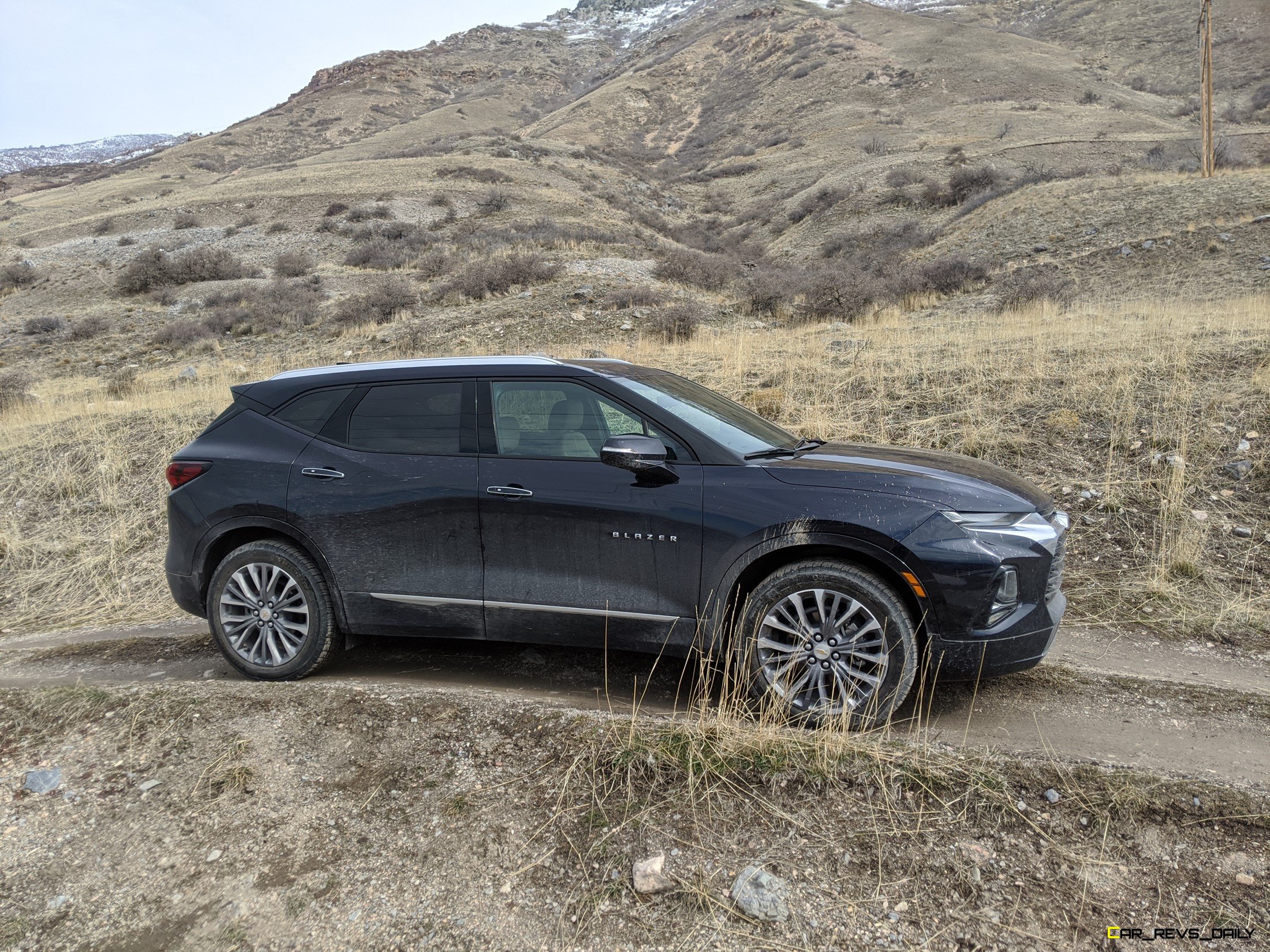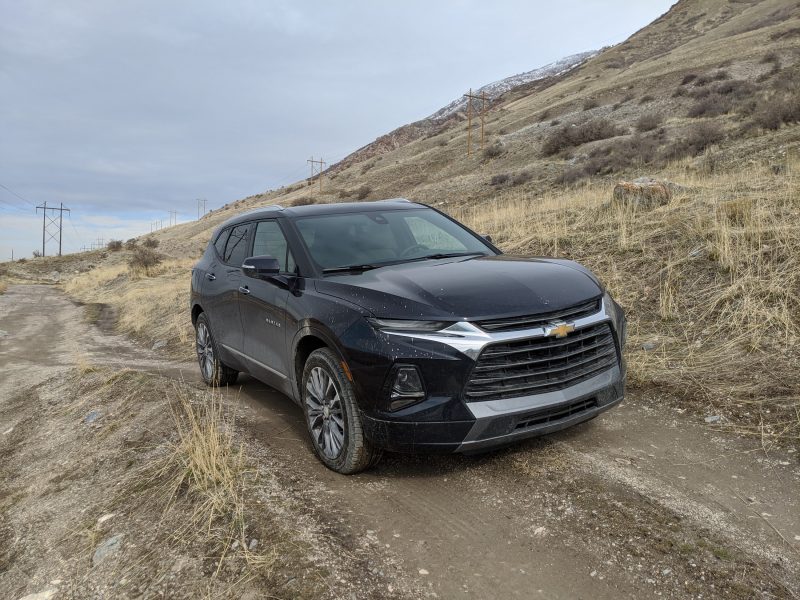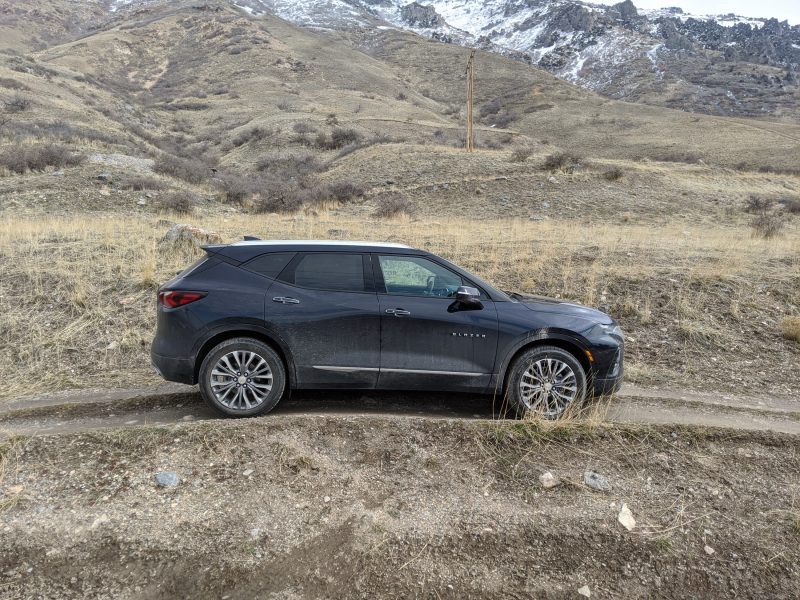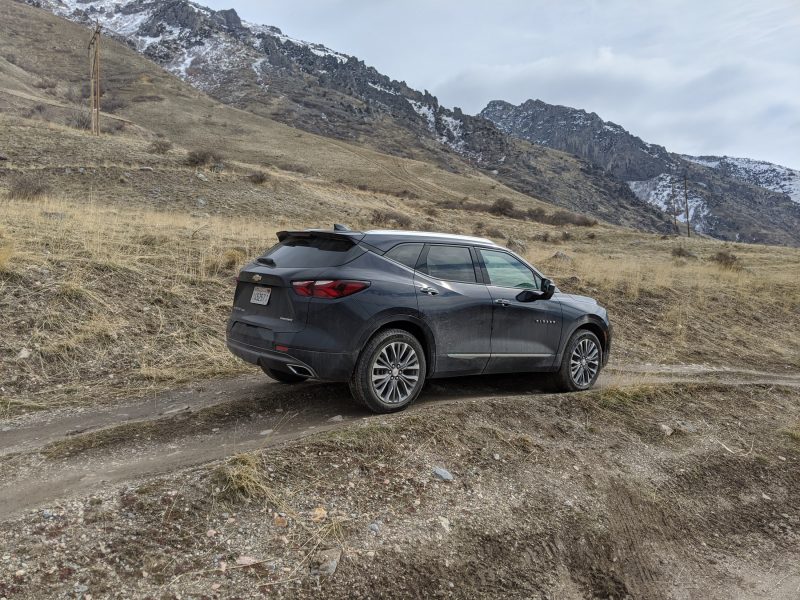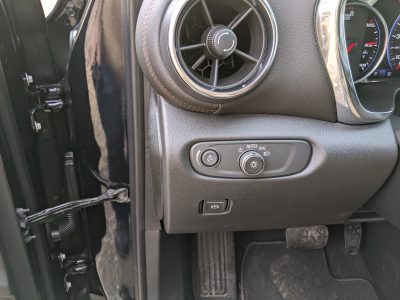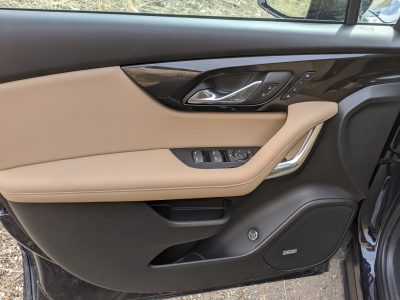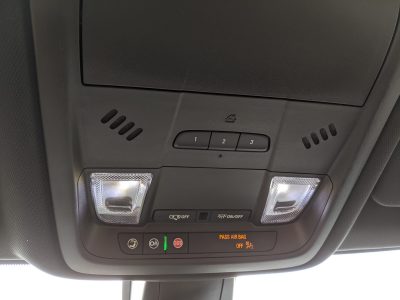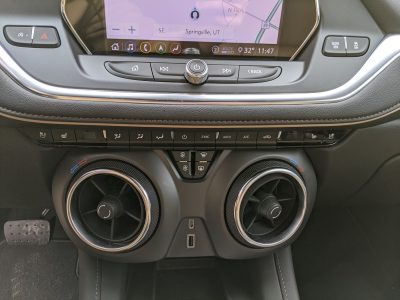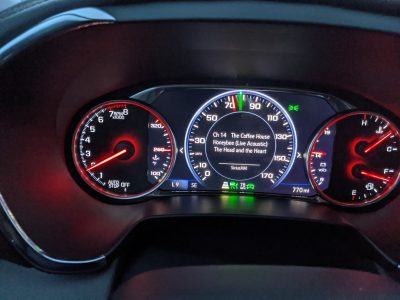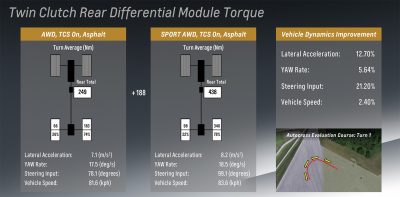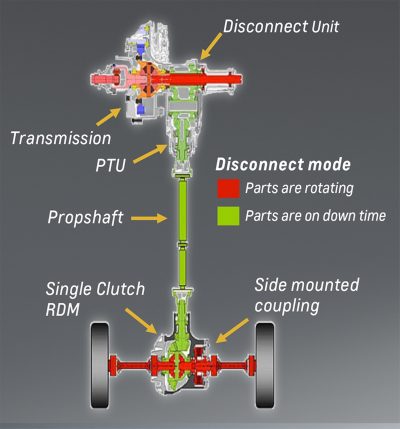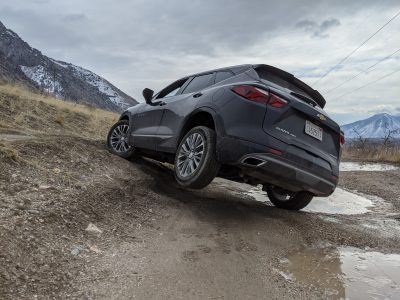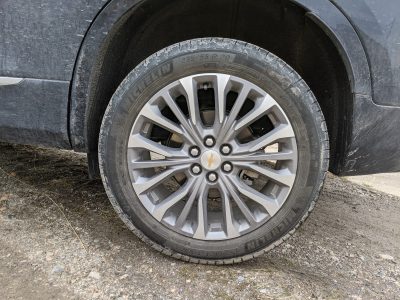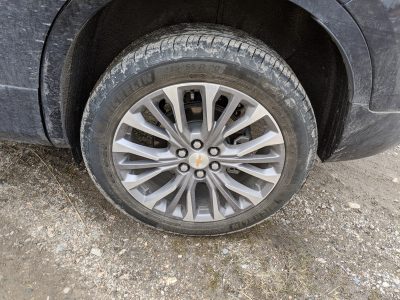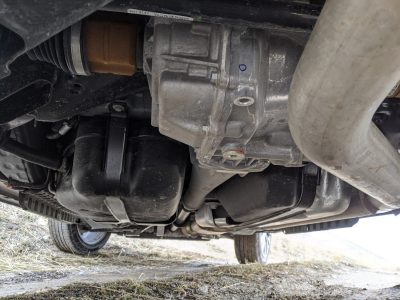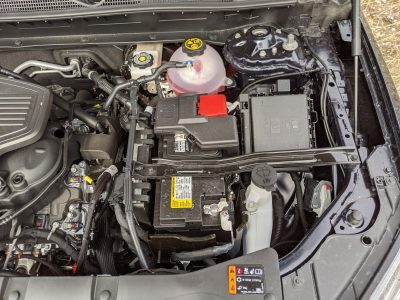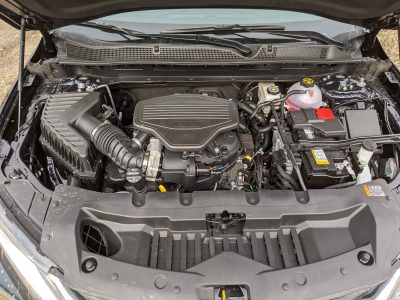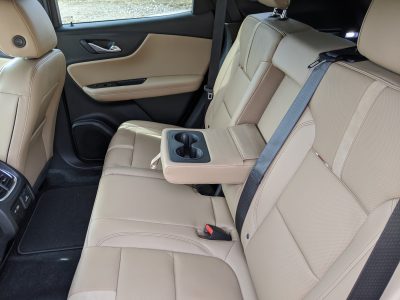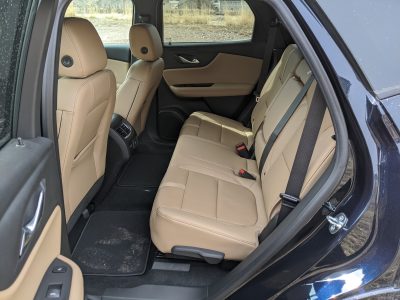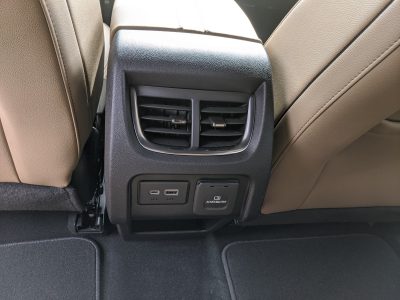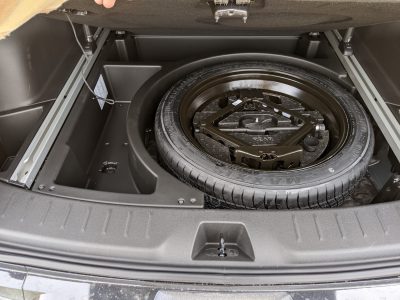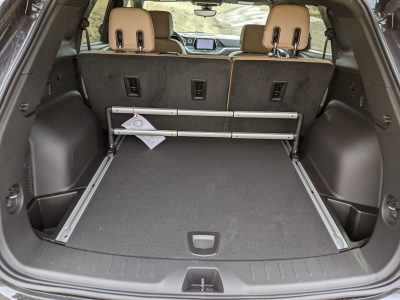Chevy released the Blazer one year ago and has already done a complete renaming of it’s trim levels for the 2020 model along with a few other trim and package updates.
Chevy added a new mid level engine option with the 2.0 liter turbocharged four cylinder. Trim level names have changed from L, 2.5L, 3.6L cloth, 3.6L leather, RS, and Premier to L, LT, 2LT, 3LT, RS, and Premier. They have also added an auto start stop override button, three new exterior colors and a new redline edition.
For our testing Chevy sent us a top-of-the-line 2020 Blazer Premier AWD in Midnight Blue Metallic. This package includes the dual clutch rear axle, 3.6 liter V6, leather and suede throughout, heavy duty cooling system, and many other features.
Off-Roading Video
Outside
Chevy designed the Blazer to be a sports crossover, and they delivered. On the outside the Blazer has sharp lines with deliberate creases and curves that give it a sporty look. The rear quarter windows are almost nonexistent due to the belt line sloping up and the roof sloping down in the rear. While it gives the Blazer a sporty look it makes for a large blindspot.
From the front there is an almost Lexus style hourglass shaped grill. It is aggressive but not obtrusive. The headlights are sleek and small, while the fog lights are placed in a very large opening down low. It’s different but looks great.
Similar to other vehicles today the front end is rounded for less drag, but there are hard creases throughout to hide the roundness and to give the Blazer an angled look. It works.
Inside
Many of Chevy’s SUVs offer the top of the line Premier trim, and in the Blazer it doesn’t disappoint. The leather is very soft, and the suede inserts help break up the monotony of large leather covered surfaces.
Up front there are heated and cooled seats and the steering wheel is heated. When the vehicle is started remotely the driver’s seat will automatically heat or cool and the steering wheel will heat if needed based on ambient temperature. This was a nice feature that made the first few minutes of driving much more comfortable. To adjust the dual zone climate control the center vents for the driver and front passenger have bezels that twist to raise or lower the temperature. It’s different but is super easy to use and we quickly adjusted to it.
One excellent feature is the rear view mirror camera. On the rear view mirror there is the tab that is normally used to dim the mirror for nighttime driving. As on option on the blazer this tab can be used to enable a second rearward camera, different from the standard backup camera, that uses the mirror face as a screen to show what’s behind the vehicle. This is a great feature as rearward visibility in the Blazer is poor.
Driving
Chevy spent a significant amount of time tuning the Blazer for great driving dynamics, and it shows. In the RS and Premier the AWD system allows for active yaw control, which is essentially torque vectoring. The RS and Premier trims come standard with the 3.6 liter V6 that puts out 308 hp and 270 lb-ft of torque. This power output makes the blazer feel more Miata than Corvette, but it works.
The biggest reason it works is the dual clutch rear end. There is no traditional differential on the RS and Premier trims. Instead there is a simple ring and pinion with 2 electro/hydraulically controlled clutches, one for each rear axle shaft. This allows for more power to be sent to the outside rear wheel when cornering to help push the Blazer around the corner. The system isn’t quite as good as a true torque vectoring system like Acura’s SH AWD, but it still works to great effect. Depending on the drive mode, of which there are five for the AWD versions, the Blazer will change how much power is sent to the rear wheels and when.
The five drive modes are:
- Tour Tour mode is front wheel drive only. AWD will not engage at any point when this mode is selected.
- All-Wheel Drive All-wheel drive mode sends power to both front and rear axles, but varies that amount based on conditions and driver inputs. When cruising at higher speeds it will only send power to the front wheels for efficiency. As wheel slip is detected it will transfer power to the rear as needed.
- Sport Sport mode has close to a 50/50 torque distribution front to rear, but changes based on driver inputs and other vehicle sensors. Sport mode also has more aggressive active yaw control for better cornering. It will hold gears a little longer especially when letting off after accelerating. This helps when getting back on the throttle after a corner so that there is no lag with having to downshift.
- Off-Road Off-road mode is the only mode that changes throttle mapping to make slow speed maneuvers more precise. This mode will also have a near 50/50 split but also is more aggressive with wheel slip transferring power almost immediately to the wheels with traction.
- Tow/Haul Tow/haul mode is similar to All-Wheel Drive mode but always sends power to the rear. This is designed to provide traction when pulling a boat up a wet and slippery boat ramp, and to provide a more stable towing platform.
The Blazer has some of the best driving dynamics of any crossover we’ve tested. The AWD system works excellent on road for sporty cornering and maneuvering and provides great traction off-road. We noticed a significant difference in Sport mode when compared to Tour or All-Wheel Drive modes for on road handling. Even off-road Sport mode was better than any other mode, except for Off-Road mode of course. Other vehicles have sport modes that hardly make a difference in driving dynamics, not so in the Blazer.
When in Off-Road mode the Blazer will easily climb even when crossed up with only two wheels with traction. The rear dual clutch system makes transferring power side to side very easy and efficient. Brake based traction control systems are the industry standard, but they take a lot of engine power. The dual clutch system in the Blazer doesn’t have all that power loss from using the brakes on the spinning wheel. It still does have a brake based traction control system from the front wheels, but we didn’t notice it taking much torque from the engine when climbing hills. This means that the rear is so efficient and effective that either the brake system was never applied or it was applied in such small amounts that it was unnoticed.
Pricing
Being the top of the line trim model we knew that this Blazer Premiere would be on the higher end of it’s class, but we weren’t expecting it to be this high. The base price for the Premiere is $45,600. Our test model was only equipped with one option, the Driver Confidence I Package. This package includes the rear camera mirror, wireless charging, advanced adaptive cruise control, HD surround vision and a few other safety features. The price for this package is $2,165 and when you add in the destination charge of $1,195 the total MSRP is $48,960. For that price you can get a top trim Lincoln Corsair or an Acura RDX. The Blazer premiere is still a good option, but be sure to check out it’s competitors as well.
Conclusion
In short the Blazer has great handling characteristics that exceed the abilities of most other crossovers. The premier trim is comfortable and functional. Off-road the Blazer has one of the best systems we’ve tested, but it’s low ground clearance, approach, and departure angles really hamper its abilities. There is a great opportunity here for Chevy to make a Blazer based off-roader that can compete with the best off-road crossovers on the market. Chevy has done a wonderful job with the Blazer and certainly has made it the top of its class. All of these great features come with a high price tag, but ultimately you get what you pay for.
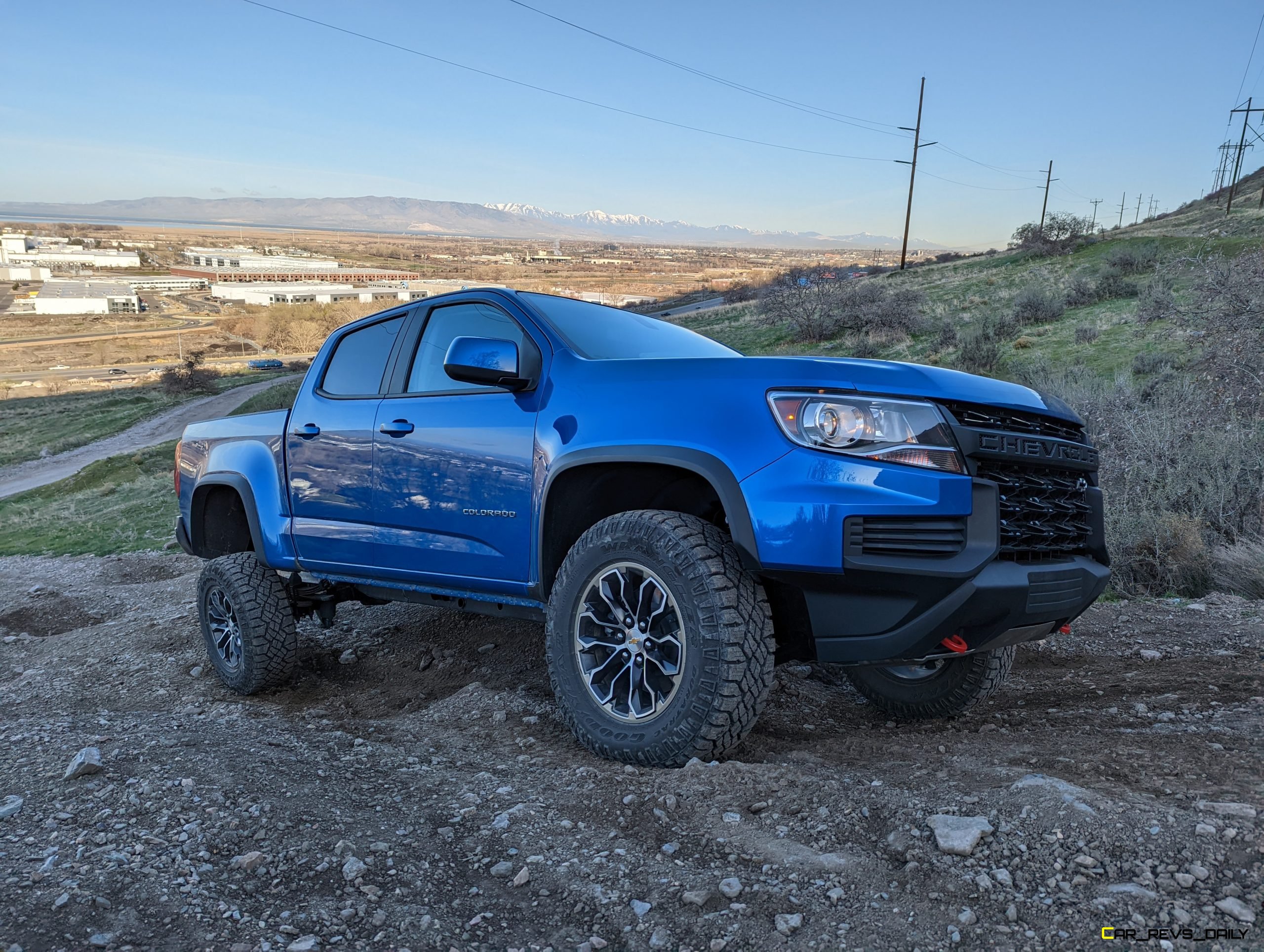
Matthew Barnes is an experienced towing expert. He works as a mechanical engineer and his day job involves testing a variety of vehicles while towing trailers of all types and sizes. Matt shares his knowledge by writing for automotive news outlets in the evenings. When he’s not working he can be found spending time in the great outdoors with his family. He enjoys camping, hiking, canyoneering, and backpacking. Whenever possible he spends time riding in or on any power sports vehicle he can find and claims he can drive anything with a motor, which probably isn’t true.
Matt lives in the Utah mountains and often posts cool off-roading videos to his Instagram and YouTube channel.

